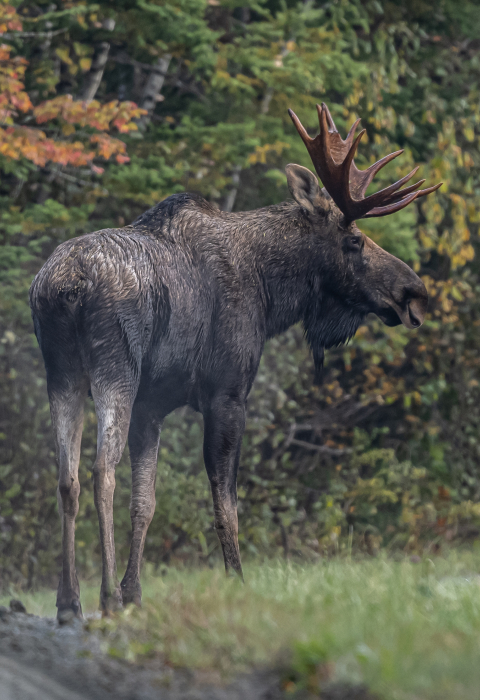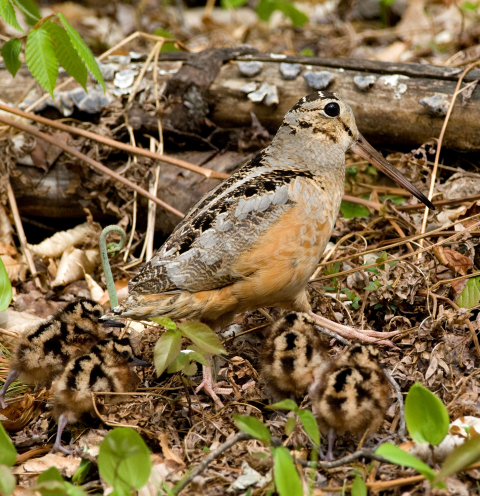National Wildlife Refuge Project
The U.S. Fish and Wildlife Service established Moosehorn National Wildlife Refuge in 1937 to protect migratory birds and to study American woodcock. The refuge has two divisions, Baring (where refuge headquarters is located) and Edmunds, together covering nearly 30,000 acres.
Exploring Habitat Creation Techniques
Conservationists have used shrub- and tree-mowing, prescribed burning, and timber harvests to mimic natural disturbances and make hundreds of acres of the young forest and shrubland.
In 1976, biologists and land managers began a major research and habitat-creation project aimed at reversing a longterm decline in the woodcock population in eastern North America.
5-Acre Cuts
In the past, the researchers made 1-acre clearcuts and larger strip cuts in hardwood and alder stands and studied how woodcock used the cut-over, regenerating areas. They also tried different cutting and burning techniques and time intervals.
Ultimately they found that 5-acre clearcuts, if located close to one another, amply met woodcocks' life needs, and that a 20- to 40-year cutting rotation in hardwoods, particularly aspens, provided the density and structure of cover that allowed the birds thrive.
Today, researchers use radio telemetry, leg-banding, and springtime surveys of singing male woodcock to monitor the species' population and to continue studying how woodcock interact with their habitat, food resources, and predators.
Helping Northern Wildlife
Other wildlife benefiting from young forest on the refuge include moose, snowshoe hare, Canada lynx, ruffed grouse, spruce grouse, rusty blackbird, and songbirds such as alder flycatcher, white-throated sparrow, chestnut-sided warbler, and American redstart.
How to Visit
Moosehorn is open to the public daily, and hunting is permitted. Contact the refuge office for locations of young forest areas.
A Landowner’s Guide to Woodcock Management in the Northeast, by G. F. Sepik, R.B. Owen, and M.W. Coulter, first published in 1981 by the University of Maine Agricultural Experiment Station, is based on research conducted at Moosehorn.



